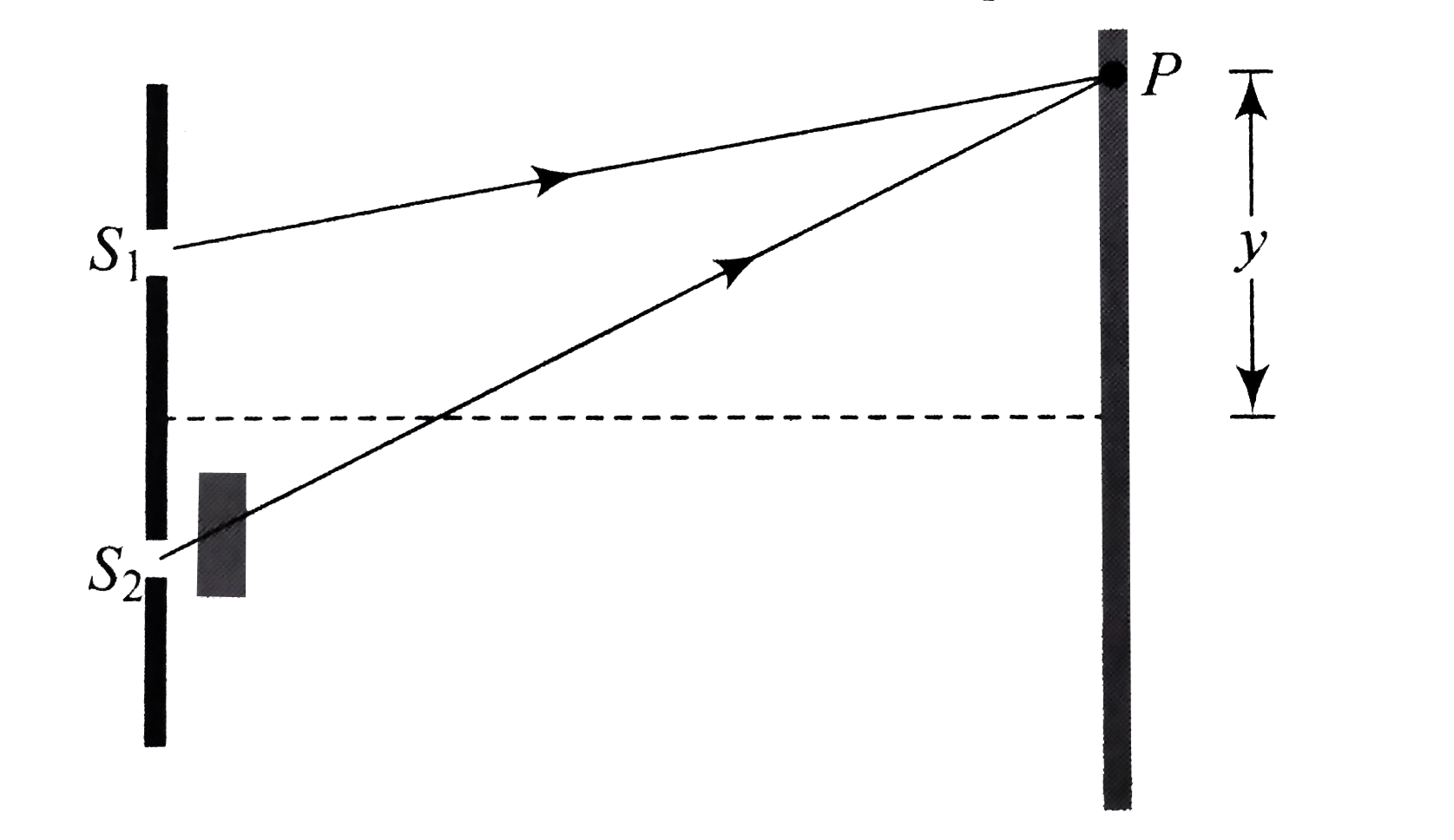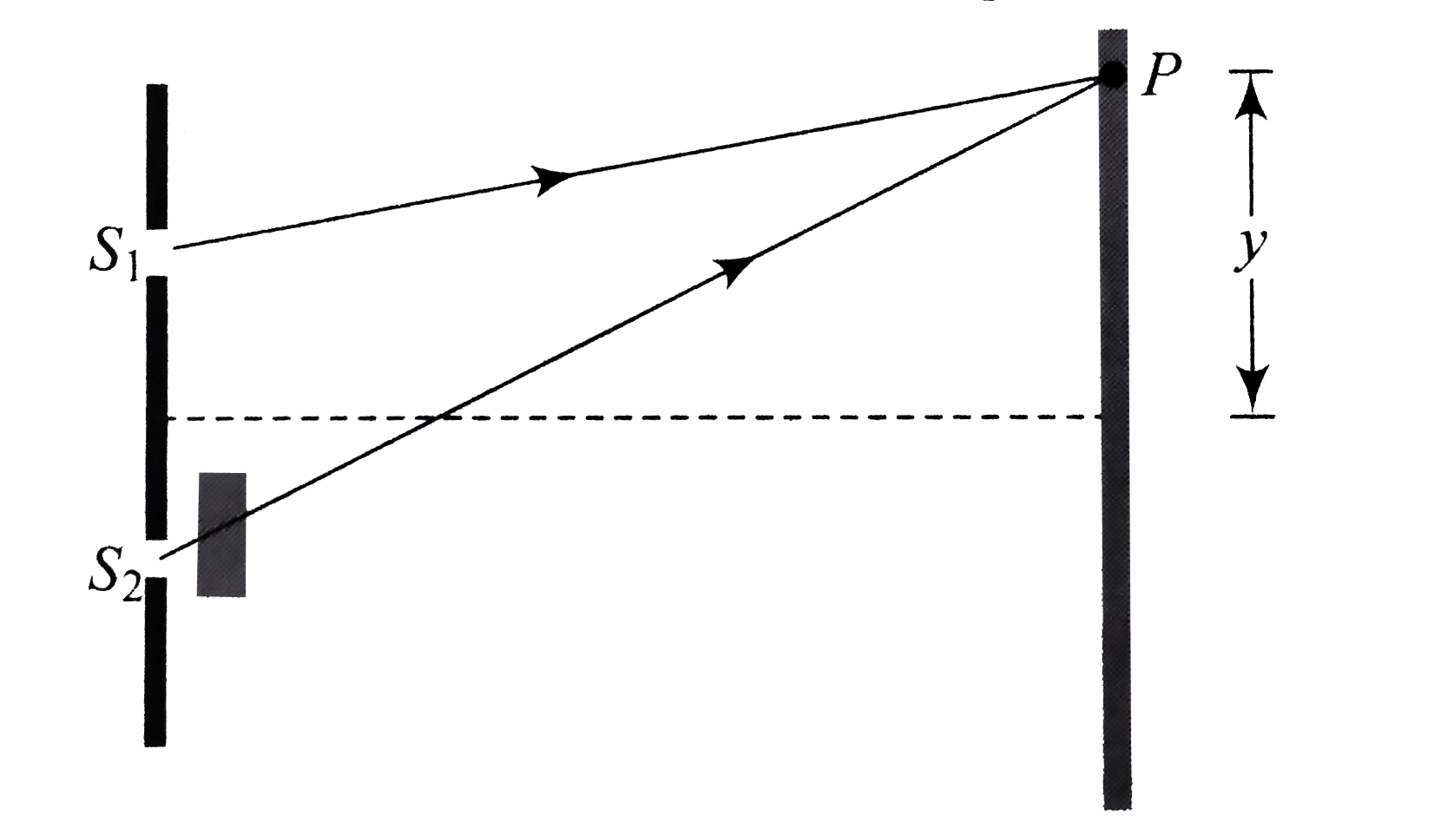Young's double slit experiment is carried out using microwaves of
wavelength λ=3cm. Distance between the slits is d=5cm and the distance
between the plane of slits and the screen is D=100cm.
(a) Find total number of maxima and
(b) their positions on the screen.
To solve the problem step-by-step, we will break it down into parts (a) and (b) as requested.
Part (a): Finding the Total Number of Maxima
1. Understanding the Condition for Maxima:
In Young's double slit experiment, maxima occur when the path difference between the two waves from the slits is an integer multiple of the wavelength. Mathematically, this is expressed as:
Δx=nλ
where n is an integer (0, ±1, ±2, ...), and λ is the wavelength.
2. Given Values:
- Wavelength λ=3cm
- Distance between the slits d=5cm
- Distance from the slits to the screen D=100cm
3. Calculating the Maximum Path Difference:
The maximum path difference that can occur at the screen is equal to the distance between the slits d. Thus, the maximum path difference is:
Δxmax=d=5cm
4. Finding the Maximum Number of Maxima:
To find the number of maxima, we need to determine how many integer values of n satisfy:
nλ≤Δxmax
Substituting the values:
n⋅3cm≤5cm
n≤53≈1.67
The integer values of n can be −1,0,+1. This gives us a total of 3 maxima (one central maximum and one on either side).
5. Conclusion for Part (a):
The total number of maxima is 3.
Part (b): Finding the Positions of the Maxima on the Screen
1. Using the Formula for Position of Maxima:
The position y of the maxima on the screen can be calculated using the formula:
y=nλDd
where n is the order of the maximum.
2. Calculating Positions for Each Maximum:
- For n=0 (central maximum):
y0=0⋅3cm⋅100cm5cm=0cm
- For n=+1 (first order maximum):
y1=1⋅3cm⋅100cm5cm=60cm
- For n=−1 (first order minimum):
y−1=−1⋅3cm⋅100cm5cm=−60cm
3. Conclusion for Part (b):
The positions of the maxima on the screen are:
- Central maximum at y=0cm
- First order maximum at y=60cm
- First order minimum at y=−60cm
Final Answer:
(a) Total number of maxima = 3
(b) Positions of maxima = 0 cm, 60 cm, -60 cm
In Young's double slit experiment, maxima occur when the path difference between the two waves from the slits is an integer multiple of the wavelength. Mathematically, this is expressed as:
Δx=nλ
where n is an integer (0, ±1, ±2, ...), and λ is the wavelength.
- Wavelength λ=3cm
- Distance between the slits d=5cm
- Distance from the slits to the screen D=100cm
The maximum path difference that can occur at the screen is equal to the distance between the slits d. Thus, the maximum path difference is:
Δxmax=d=5cm
To find the number of maxima, we need to determine how many integer values of n satisfy:
nλ≤Δxmax
Substituting the values:
n⋅3cm≤5cm
n≤53≈1.67
The integer values of n can be −1,0,+1. This gives us a total of 3 maxima (one central maximum and one on either side).
The total number of maxima is 3.
The position y of the maxima on the screen can be calculated using the formula:
y=nλDd
where n is the order of the maximum.
- For n=0 (central maximum):
y0=0⋅3cm⋅100cm5cm=0cm
- For n=+1 (first order maximum):
y1=1⋅3cm⋅100cm5cm=60cm
- For n=−1 (first order minimum):
y−1=−1⋅3cm⋅100cm5cm=−60cm
The positions of the maxima on the screen are:
- Central maximum at y=0cm
- First order maximum at y=60cm
- First order minimum at y=−60cm
(a) Total number of maxima = 3
(b) Positions of maxima = 0 cm, 60 cm, -60 cm
Topper's Solved these Questions
- INTERFERENCE AND DIFFRACTION OF LIGHTBOOK - DC PANDEY ENGLISHCHAPTER - INTERFERENCE AND DIFFRACTION OF LIGHTEXERCISE - Exercise 32.1
3 Videos
- INTERFERENCE AND DIFFRACTION OF LIGHTBOOK - DC PANDEY ENGLISHCHAPTER - INTERFERENCE AND DIFFRACTION OF LIGHTEXERCISE - Exercise 32.2
6 Videos
- INTERFERENCE AND DIFFRACTION OF LIGHTBOOK - DC PANDEY ENGLISHCHAPTER - INTERFERENCE AND DIFFRACTION OF LIGHTEXERCISE - Example Type 6
3 Videos
- GRAVITATIONBOOK - DC PANDEY ENGLISHCHAPTER - GRAVITATIONEXERCISE - All Questions
135 Videos
- MAGNETIC FIELD AND FORCESBOOK - DC PANDEY ENGLISHCHAPTER - MAGNETIC FIELD AND FORCESEXERCISE - Medical entrance s gallery
59 Videos
Similar Questions
A beam of light consisting of two wavelenths, 6500 Å and 5200 Å is used to obtain interference fringes in a Young's double slit experiment (1Å=10−10m). The distance between the slits is 2.0 mm and the distance between the plane of the slits and the screen in 120 cm. (a) Find the distance of the third bright frings on the screen from the central maximum for the wavelength 6500 Å (b) What is the least distance from the central maximum where the bright frings due to both the wavlelengths coincide ?
View SolutionYoung's double-slit experiment setup with ligth of wavelength λ=6000Å, distance between two slit in 2 mm and distance between the plane of slits and the screen. Is 2 m. The slits are of equal intensity. When a sheet of glass of refractive index 1.5 (which permtis only a fraction η of the incident light to pass through) and thickness 8000Å is placed in front of the lower slit, it is observed that the intensity at a point P, 0.15 mm above the central maxima, does not change.

Intensity at point P is
View SolutionYoung's double-slit experiment setup with ligth of wavelength λ=6000Å, distance between two slit in 2 mm and distance between the plane of slits and the screen. Is 2 m. The slits are of equal intensity. When a sheet of glass of refractive index 1.5 (which permtis only a fraction η of the incident light to pass through) and thickness 8000Å is placed in front of the lower slit, it is observed that the intensity at a point P, 0.15 mm above the central maxima, does not change.

The value of η is
View SolutionThe Young's double slit experiment is carried out with light of wavelength 5000Å. The distance between the slits is 0.2mm and the screen is at 200cm from the slits. The central maximum is at y=0. The third maximum will be at y equal to
View SolutionA beam of light consisting of two wavelength , 6500A∘ and 5200A∘ is used to obtain interference fringes in a Young's double slit experiment (1Å=10−10m). The distance between the slits 2.0 mm and the distance between the plane of the slits and the screen is 120 cm. Find the distance of the third bright fringe on the screen from the central maximum for the wavelength 6500Å.
View SolutionIn Young's double slit experiment, the sepcaration between the slits is halved and the distance between the slits and the screen is doubled. The fringe width is
View SolutionIn Young's double-slit experiment, the separation between the slits is halved and the distance between the slits and the screen in doubled. The fringe width is
View SolutionIn Young's double slit experiment, the sepcaration between the slits is halved and the distance between the slits and the screen is doubled. The fringe width is
View SolutionIn Young's double slit experiment, the separation between the slits is halved and the distance between the slits and the screen is doubled. The fringe width is
View SolutionIn Young's double slit experiement when wavelength used is 6000Å and the screen is 40cm from the slits, the fringes are 0.012cm wide. What is the distance between the slits?
View Solution
